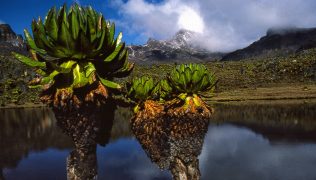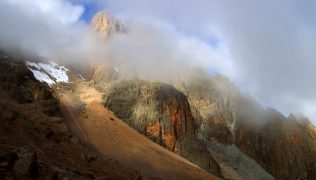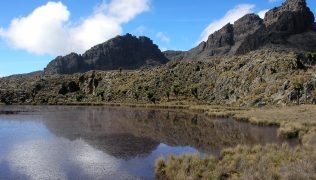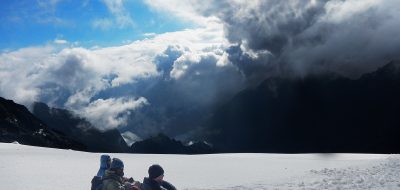Mount Kenya is the highest mountain in Kenya and the second-highest in Africa, after Kilimanjaro. Its highest peaks are Batian (5,199 meters), Nelion (5,188 meters), and Lenana (4,985 meters). As one of the most famous landmarks in the country, it is a favorite among hikers, climbers, and nature enthusiasts.
Mount Kenya was designated a UNESCO World Heritage Site in 1997, largely because of its outstanding natural beauty, unique flora and fauna, and its role as a water catchment area. It is located around 150 kilometers northeast of the capital, Nairobi.
Trekking and Climbing
Mount Kenya is popular for its trekking and climbing opportunities. There are several routes to the summit with varying degrees of difficulty:- Sirimon Route: This is the most popular route, thanks to its more gradual ascent, which allows for better acclimatization. The trek is usually done over 5 or 6 days.
- Chogoria Route: Known for its scenic beauty, the Chogoria Route is steeper than the Sirimon Route and is usually used for descent.
- Naro Moru Route: This is the shortest and steepest route, often used by those who are acclimatized to the altitude and looking for a faster climb.
- Burguret and Timau Routes: These are less commonly used, offering quieter and more challenging treks.
Things to Do
Besides trekking and climbing, there are plenty of other activities to enjoy:- Wildlife Viewing: The lower slopes are home to diverse wildlife including elephants, buffalo, and various primates. Bird watchers will also find the area fascinating, with over 130 bird species recorded.
- Photography: The scenery, with its unique vegetation, wildlife, and stunning views, is a paradise for photographers.
- Cultural Experiences: Visit local communities to learn about Kenyan culture and traditions.
Best Time to Go
The best time to climb Mount Kenya is during the dry seasons, typically January to February and July to October. During these periods, the weather is usually clear and the trails are less slippery, offering better conditions for trekking. However, weather on the mountain can be unpredictable and can change rapidly, so it’s essential to be prepared for all conditions.Facts and Figures
- Mount Kenya is an ancient strato volcano, thought to have last erupted around 2.6 to 3.1 million years ago.
- It is located on the equator but thanks to its height, it has glaciers.
- The mountain is a vital water catchment area, supplying water to about 50% of Kenya’s population.
- It’s home to the unique vegetation zone of Afro-alpine plants, including the giant groundsel and lobelia.

















